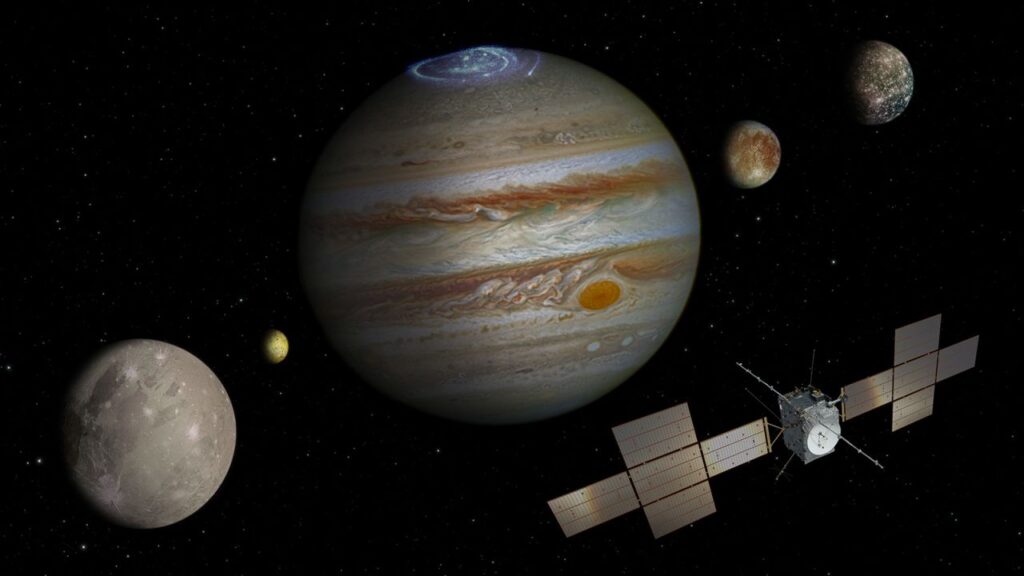The European Space Agency’s (ESA) Juice mission is set to make history this week by conducting the first-ever flyby of the moon and Earth in succession. The spacecraft, launched in April 2023, will use the gravity of both celestial bodies to change its trajectory and gain speed, ultimately reaching Jupiter’s icy moons in 2031.
The Juice spacecraft will perform a double gravity assist maneuver, flying by the moon on August 19 and Earth on August 20. This complex operation will slow down the spacecraft, allowing it to fly by Venus in August 2025 and gain an energy boost. The spacecraft will then loop around Earth twice for additional boosts before arriving at Jupiter in 2031.
High-Risk, High-Reward Mission
The Juice mission is a high-risk, high-reward endeavor. The spacecraft must pass through a narrow corridor, using the gravity of both Earth and the moon to change its trajectory. One small mistake could knock the spacecraft off course, ending the mission.
The mission team has spent years planning and preparing for this moment. Operators will closely track the spacecraft’s data before, during, and after the flyby, making any necessary adjustments to ensure success.

During the flyby, Juice will activate all 10 of its scientific instruments to calibrate them before arriving at Jupiter. The mission team may also make some discoveries about Earth and the moon while the instruments operate.
The Radar for Icy Moon Exploration (RIME) instrument will take eight minutes to make observations during the flyby, gathering data on electronic noise within the spacecraft.
Although Juice was designed to explore the cold, dim reaches of the solar system near Jupiter, it will be closer to the sun during the flyby. The spacecraft must tilt its solar arrays to prevent overheating and aim its high-gain antenna at the sun to act as a heat shield.
Telescopes and observatories have been tracking Juice’s close approach throughout the summer. The spacecraft appeared larger and brighter than expected due to its large, reflective solar arrays.
The agencies have confirmed that Juice poses no risk to Earth or the moon during its flyby.
Arrival at Jupiter
After the flyby, Juice will take a shortcut through the solar system, using the gravity of Venus to gain speed and arrive at Jupiter in 2031. The spacecraft will study the Jupiter system, including the icy moons Ganymede, Europa, and Callisto.
